Ras Al Khaimah's Rich Culture: 10 Cultural Activities to Explore
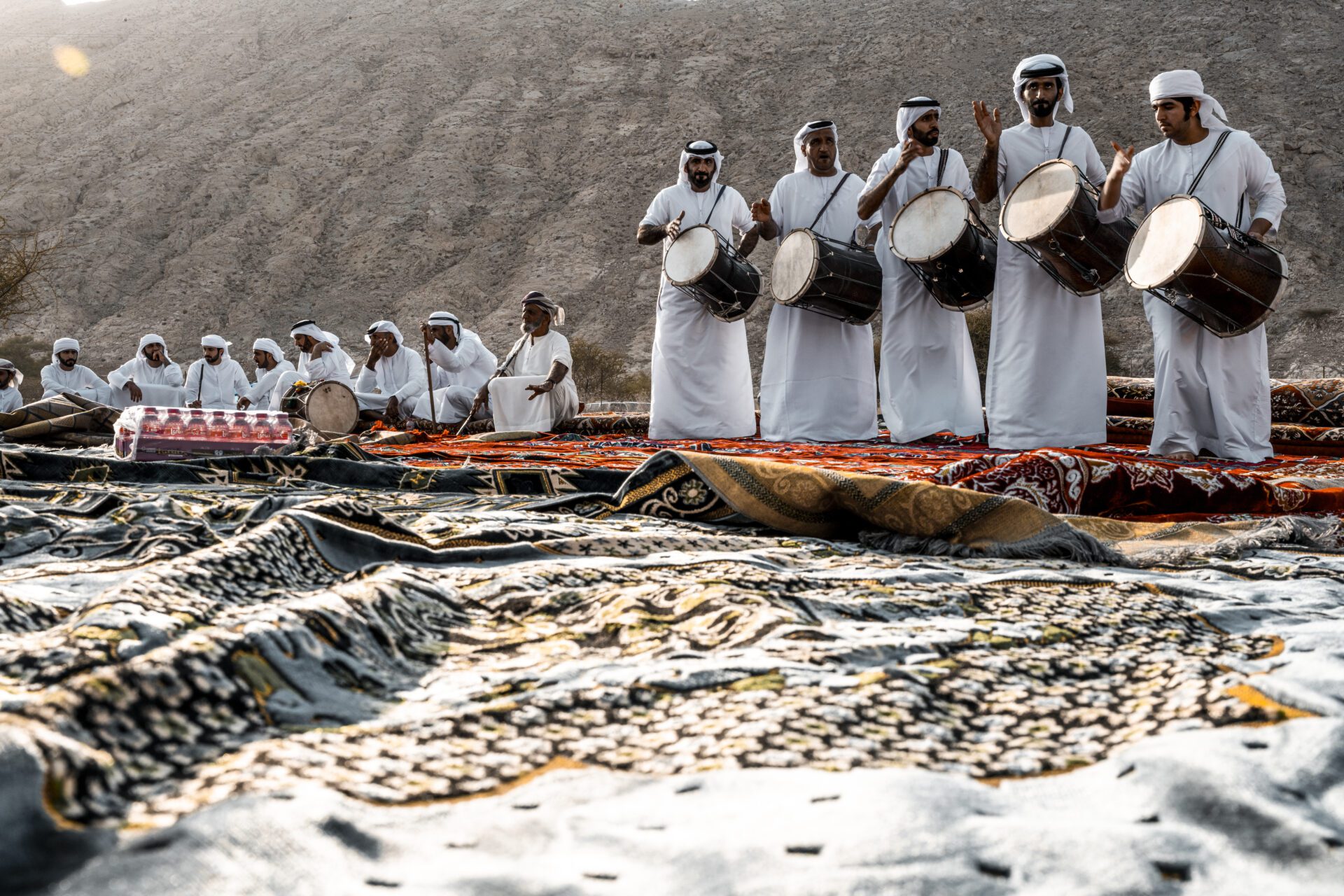

For attendees who are art lovers, history buffs, and foodies, these cultural activities will be a great complement to any meeting or incentive trip itinerary.
Start planning with our experts here.
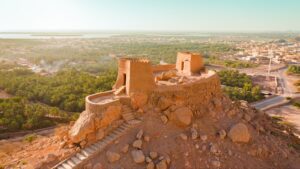
Dhayah Fort is the only remaining hilltop fort in the United Arab Emirates. Erected between 1600 to 1300 BC, this Bronze Age structure is a great opportunity for any attendees who love history to see the stone constructs or explore any of the twelve expansive Wadi Suq tombs that date back to a period between 2000 and 1300BC.

The village of Al Jazeera Al Hamra offers attendees another chance to learn about local history and architecture. The village is known for its traditional mud-brick houses and narrow alleyways, providing a glimpse into the past. Guided tours are available, during which attendees can learn about ongoing restoration efforts and the historical significance of the destination.
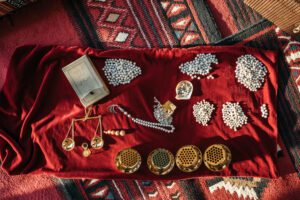
The Suwaidi Pearl Farm showcases the historical significance of pearl diving and jewelry making in Ras Al Khaimah. Attendees can participate in a hands-on experience by boarding a traditional pearl fishing boat and observing skilled artisans crafting jewelry. They also have the chance to try their own hand at creating unique pieces of jewelry during their visit.
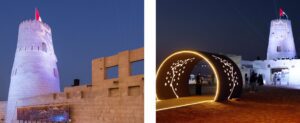
Occurring every year in the village of Al Jazeera Al Hamra, the Ras Al Khaimah Fine Arts Festival (RAKFAF) is a nonprofit community arts festival with the purpose of showcasing the work of local and emerging artists. Attendees who join will experience art, photography, and films, as well as support the creative industry of our emirate. RAFKAF also emphasizes Ras Al Khaimah’s close ties with the desert, mountains, and the sea by organizing satellite exhibitions on the Jebel Jais Mountains and Marjan Island.
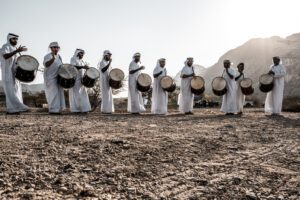
Throughout the year, Ras Al Khaimah hosts many festivals and events celebrating Bedouin culture.
Dance is very common during these celebrations, including Al Wahabiyya, Ras Al Khaimah’s traditional stick dance that is usually reserved for special occasions. It involves two rows of dancers, signifying the unity of Ras Al Khaimah tribes, set to the rhythm and beat of drums and poetry.
Poetry is another form of expression that is culturally significant in Ras Al Khaimah. Taghrouda is a form of Bedouin poetry that is traditionally written and performed by men riding through the desert on camels. The poems are often sung at weddings, festivals, camel races, and campfires. Any of attendees who get a chance to experience Taghrouda or Al Wahabiyya will be treated to a cultural staple of Ras Al Khaimah.
For more information on planning excursions, contact the RAKTDA MICE team: https://raktda.com/mice/
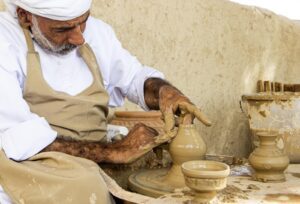
Ras Al Khaimah has unique approaches to pottery, weaving, and textile crafts that are beautiful and interesting to any art-loving attendees.
In Ras Al Khaimah, pottery is typically made with red clay or green clay. Red clay, or stoneware clay, comes from the mountains and is shaped into plates and bowls. Green clay is dug from underground and combined with red clay to make pottery at lower temperatures. Common crafts include Hib, or water pots, and chirr and kharas, which are pots used to store dates and dried fish.
Sadu and Talli are both textile crafts that involve intricately weaving materials like camel fur, goat hair, sheep wool, and threads to create tents, carpets, blankets, and clothing. They typically require extensive training and patience, as it often takes several days to a week to complete the craft. In 2011, UNESCO put Sadu on a list of Intangible Cultural Heritages in Need of Urgent Safeguarding.
For more information on planning excursions, contact the RAKTDA MICE team: https://raktda.com/mice/
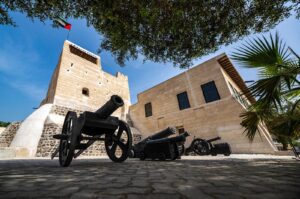
History and culture are found in many places in Ras Al Khaimah, but they are perhaps most centralized in our museums. Attendees can learn about the Nature Emirate and get a closer look at artifacts in the National Museum of Ras Al Khaimah.
The National Museum of Ras Al Khaimah is full of ancient pottery, weapons, instruments, and clothing that are thousands of years old. The Department of Antiquities and Museums has provided support to the development of this archive through their archaeological excavations and research.
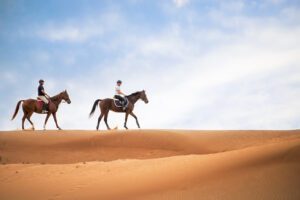
The Al Wadi Equestrian Centre in the red dunes of Ras Al Khaimah’s desert is home to Arabian horses, oryx, camels, desert foxes, and the rarely seen desert cat. Attendees can take horseback riding lessons from trained professionals, explore the dunes, and learn about the Emirati history of horseback riding and the conservation efforts of the once-endangered Arabian oryx.
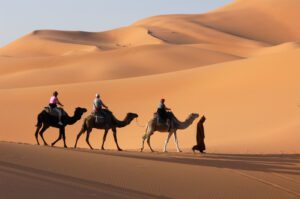
Camels have been a cultural symbol of the United Arab Emirates for centuries. The animal has played a central role in transportation, food, and entertainment.
Attendees have a chance to interact with camels up-close in a variety of ways. At the previously mentioned Al Wadi Equestrian Centre, camel rides are offered through desert landscapes. Attendees can also go to the Al Sawan Camel Racetrack and witness camels run at speeds from 40 to 65 kilometers per hour. The iconic Emirati animal is also an excellent swimmer, and at Adventurati Ras Al Khaimah attendees can experience swimming alongside them.
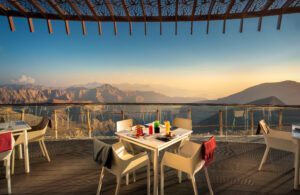
For attendees who seek fine dining options, Ras Al Khaimah has luxury restaurants that serve both national and international cuisines in beautiful ambience.
1484 by Puro is named for its height above sea level—1,484 meters—and is nestled in the Jebel Jais Mountains, providing attendees with an unreal view to complement their blend of cuisines from around the world. Located right next to the Jais Flight, 1484 will add a luxury element to any meeting or incentive trip itinerary.
If attendees are interested in trying classic Emirati cuisine, Skeek is a great option right by the Arabian Gulf. This breakfast restaurant and café offers a variety of classic Emirati sides like khameer and chebab, and a variety of fresh juices, coffee drinks, and cocktails.
At Kibba Wa Tabbola, attendees are treated to a blend of Mediterranean dishes with Syrian and Lebanese influence. Labneh, kebabs, mahashi, and Fattah are among the many options for attendees to enjoy while dining in the ambience of a restaurant furnished with traditional items from Damascene homes.
From historical monuments and museums to arts and crafts to fine dining, Ras Al Khaimah provides options for attendees with diverse interests to enjoy our culture. All of these cultural activities, or any of our many excursions, make Ras Al Khaimah a destination well-equipped to host an upcoming meeting, conference, event, or incentive trip.
Ready to start planning? Get started here.